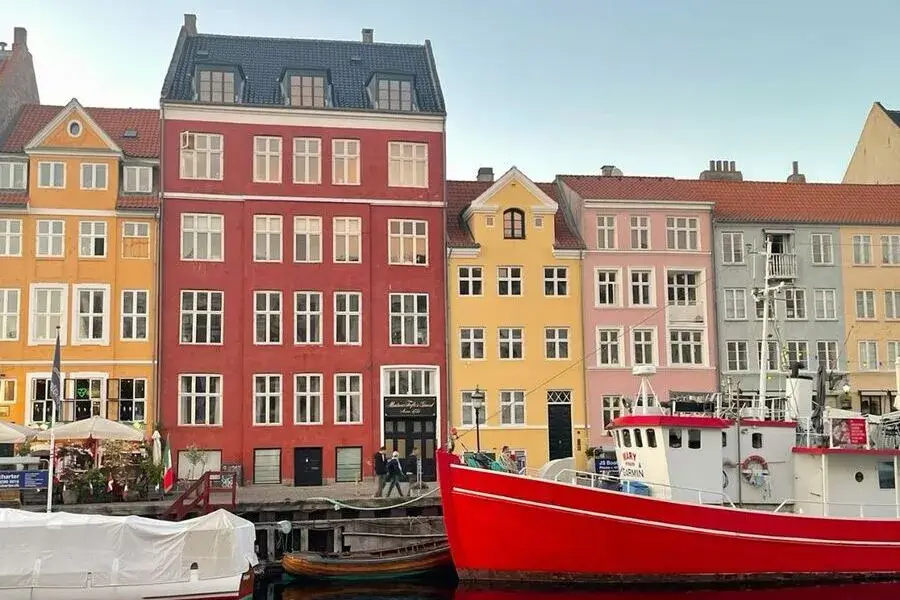In an era where environmental sustainability has become a pressing global priority, cities around the world are taking bold steps to reduce their ecological footprint. Europe stands out as a leader in this movement, with several of its cities earning global recognition as ecocities. These urban hubs are not only making strides in reducing carbon emissions but are also redefining urban living through innovative approaches to energy, transportation, and waste management. As the world faces mounting challenges from climate change, these cities serve as beacons of hope and models for sustainable urban development.
This blog explores some of Europe’s most celebrated ecocities, delving into the innovative initiatives that have propelled them to the forefront of sustainable urban planning.
From Copenhagen’s ambitious carbon neutrality goals to Freiburg’s pioneering use of renewable energy, these cities exemplify what is possible when vision meets action.
Well-known ecocities in Europe
The concept of an ecocity encompasses more than just green spaces and efficient public transportation. It involves a holistic approach to sustainability, integrating environmental, social, and economic dimensions. Europe’s ecocities are at the forefront of implementing renewable energy solutions, fostering green entrepreneurship, and promoting eco-conscious lifestyles. By doing so, they address pressing issues such as air pollution, traffic congestion, and resource scarcity while enhancing the quality of life for their residents. Here are some popular ecocities you should visit in Europe.
1. Copenhagen, Denmark: The pioneer of carbon neutrality
Copenhagen is often hailed as the gold standard among ecocities, thanks to its ambitious goal of becoming the world’s first carbon-neutral capital by 2025. The Danish capital has invested heavily in renewable energy, particularly wind power, which supplies a significant portion of the city’s electricity. Additionally, Copenhagen’s district heating system—one of the largest in the world—efficiently supplies heat to residential and commercial buildings, reducing reliance on fossil fuels.
Cycling is a way of life in Copenhagen, with nearly half of its residents commuting by bike daily. The city’s extensive network of bike lanes and its “Cycle Superhighways” make it easy and safe for residents to choose cycling over driving. Public transportation is equally sustainable, with electric buses and a metro system that runs on renewable energy. These initiatives not only reduce greenhouse gas emissions but also promote healthier lifestyles among residents.
Copenhagen’s commitment to sustainability extends to urban planning. The city incorporates green roofs, rainwater harvesting systems, and public parks into its architecture, creating spaces that are both environmentally friendly and enjoyable for residents. Copenhagen’s approach demonstrates how cities can integrate sustainability into every aspect of urban life.
2. Freiburg, Germany: The solar capital of Europe
Freiburg, often referred to as the “Solar Capital of Europe,” is a shining example of how renewable energy can transform a city. Located in the Black Forest region, Freiburg has embraced solar energy as a cornerstone of its sustainability strategy. The city is home to numerous solar installations, including photovoltaic panels on residential rooftops and public buildings. This commitment to renewable energy has significantly reduced Freiburg’s carbon emissions and set a benchmark for other cities to follow.
Beyond its solar initiatives, Freiburg is renowned for its eco-friendly urban planning. The Vauban district, for instance, is a car-free neighborhood designed to promote sustainable living. Residents rely on bicycles, public transportation, and shared cars, reducing the need for private vehicles. The district also features energy-efficient buildings, many of which generate more energy than they consume, thanks to advanced insulation and renewable energy technologies.
Freiburg’s success is a testament to the power of community engagement. The city’s residents have played a pivotal role in driving its sustainability initiatives, from participating in grassroots movements to supporting local policies. This collective effort has turned Freiburg into a model for other cities aiming to achieve ecological balance.
3. Stockholm, Sweden: Balancing nature and innovation
Stockholm, the capital of Sweden, has long been a leader in integrating sustainability into urban development. The city’s innovative approach to waste management is a standout feature, with an advanced recycling system that diverts nearly all household waste from landfills. Stockholm also harnesses waste-to-energy technology, converting organic waste into biogas for public buses and heating systems.
One of Stockholm’s most ambitious projects is the Hammarby Sjöstad district, a former industrial area transformed into a sustainable urban community. The district features energy-efficient buildings, a comprehensive recycling program, and green transportation options, including electric ferries and bike-sharing schemes. Residents are encouraged to adopt eco-friendly practices, making Hammarby Sjöstad a living laboratory for sustainable urban living.
Stockholm’s green spaces further enhance its ecological credentials. The city is dotted with parks, nature reserves, and waterways that provide habitats for wildlife and recreational areas for residents. These green spaces, combined with Stockholm’s commitment to innovation, make it a leading example of how cities can balance environmental preservation with urban development.
4. Ljubljana, Slovenia: A green transformation
Ljubljana, the capital of Slovenia, has undergone a remarkable transformation in recent years, earning the title of European Green Capital in 2016. The city has implemented a series of initiatives to reduce its environmental impact, from introducing a pedestrian-only city center to promoting sustainable tourism. Ljubljana’s efforts have not only improved air quality but also enhanced the city’s appeal as a tourist destination.
A key element of Ljubljana’s sustainability strategy is its focus on waste management. The city has achieved one of the highest recycling rates in Europe, thanks to an efficient waste collection system and public awareness campaigns. Ljubljana’s “Zero Waste” goal aims to further reduce waste generation and promote circular economy principles.
Green mobility is another cornerstone of Ljubljana’s ecological success. The city offers an extensive network of bike-sharing stations and electric vehicle charging points, making it easier for residents and visitors to choose sustainable modes of transportation. These initiatives, combined with Ljubljana’s emphasis on preserving its natural heritage, have solidified its status as a leading ecocity.d local economies. Ecovillages blend the best of both worlds: the ecological benefits of an ecocity on a village scale.
Europe’s ecocities are more than just urban centers; they are living examples of how innovative policies and community engagement can pave the way for a sustainable future. Cities like Copenhagen, Freiburg, Stockholm, and Ljubljana have demonstrated that it is possible to balance economic growth with environmental preservation, creating urban environments that are both vibrant and resilient.
As the world grapples with the challenges of climate change and resource depletion, the lessons from Europe’s ecocities offer valuable insights. By prioritizing renewable energy, sustainable transportation, and waste management, these cities are not only reducing their ecological footprint but also improving the quality of life for their residents. Their success serves as a call to action for other cities around the globe to embrace sustainability and work towards a greener future.





